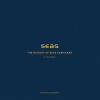The Syntax of Icelandic
Icelandic is a syntactically interesting language, with aspects of its word order, clause structure, agreement patterns and case system arousing much theoretical interest and debate in recent years. This is an informative and accessible guide to the structure of Icelandic, focusing in particular on those characteristics that have contributed greatly to syntactic research. Each chapter is divided into two main sections - providing both a descriptive overview and a discussion of the theoretical and comparative issues involved - and a wide range of topics are covered, including case, agreement, grammatical relations, thematic roles, word order, clause structure, fronting, extraposition, complement, adjuncts, pronouns, and inflection. Also explored in detail are the similarities and differences between Icelandic and other related languages. Presupposing only a basic knowledge of syntax and complete with an extensive bibliography, this comprehensive survey will be an important tool for all those working on the structure of Scandinavian and Germanic languages.
• An important tool for those who want to understand recent work on Germanic and Scandinavian languages • Contains an extensive bibliography pointing to work on Icelandic, Scandinavian and Germanic syntax • Comprehensive, looking at the full range of important syntactic topics across Icelandic and other related languages
Contents1. Introduction; 2. Word order and clause structure; 3. Order of elements within the phrases; 4. Case, agreement, grammatical relations and thematic roles; 5. Passives, middles and unaccusatives; 6. Expletive constructions and clause structure; 7. Fronting, focussing, extraposition and NP-shift; 8. Finite and non-finite complements and adjuncts; 9. Pronouns, reflexives and empty categories.
- Forlag: Cambridge University Press
- Utgivelsesår: 2007
- Kategori: Språk
- Lagerstatus: Ikke på lagerVarsle meg når denne kommer på lager
- Antall sider: 576
- ISBN: 9780521591904
- Innbinding: Innbundet











